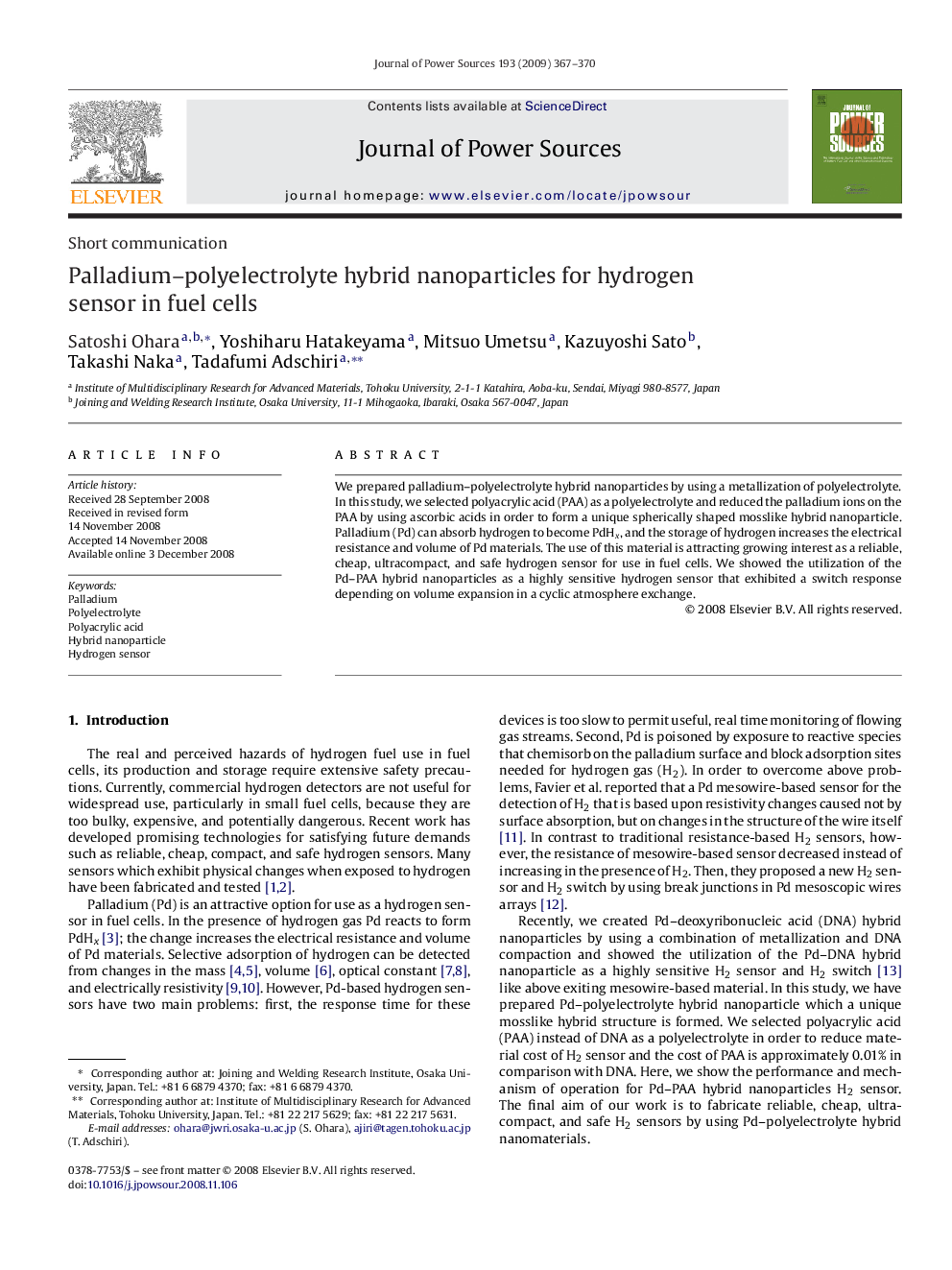| Article ID | Journal | Published Year | Pages | File Type |
|---|---|---|---|---|
| 1289494 | Journal of Power Sources | 2009 | 4 Pages |
Abstract
We prepared palladium-polyelectrolyte hybrid nanoparticles by using a metallization of polyelectrolyte. In this study, we selected polyacrylic acid (PAA) as a polyelectrolyte and reduced the palladium ions on the PAA by using ascorbic acids in order to form a unique spherically shaped mosslike hybrid nanoparticle. Palladium (Pd) can absorb hydrogen to become PdHx, and the storage of hydrogen increases the electrical resistance and volume of Pd materials. The use of this material is attracting growing interest as a reliable, cheap, ultracompact, and safe hydrogen sensor for use in fuel cells. We showed the utilization of the Pd-PAA hybrid nanoparticles as a highly sensitive hydrogen sensor that exhibited a switch response depending on volume expansion in a cyclic atmosphere exchange.
Related Topics
Physical Sciences and Engineering
Chemistry
Electrochemistry
Authors
Satoshi Ohara, Yoshiharu Hatakeyama, Mitsuo Umetsu, Kazuyoshi Sato, Takashi Naka, Tadafumi Adschiri,
